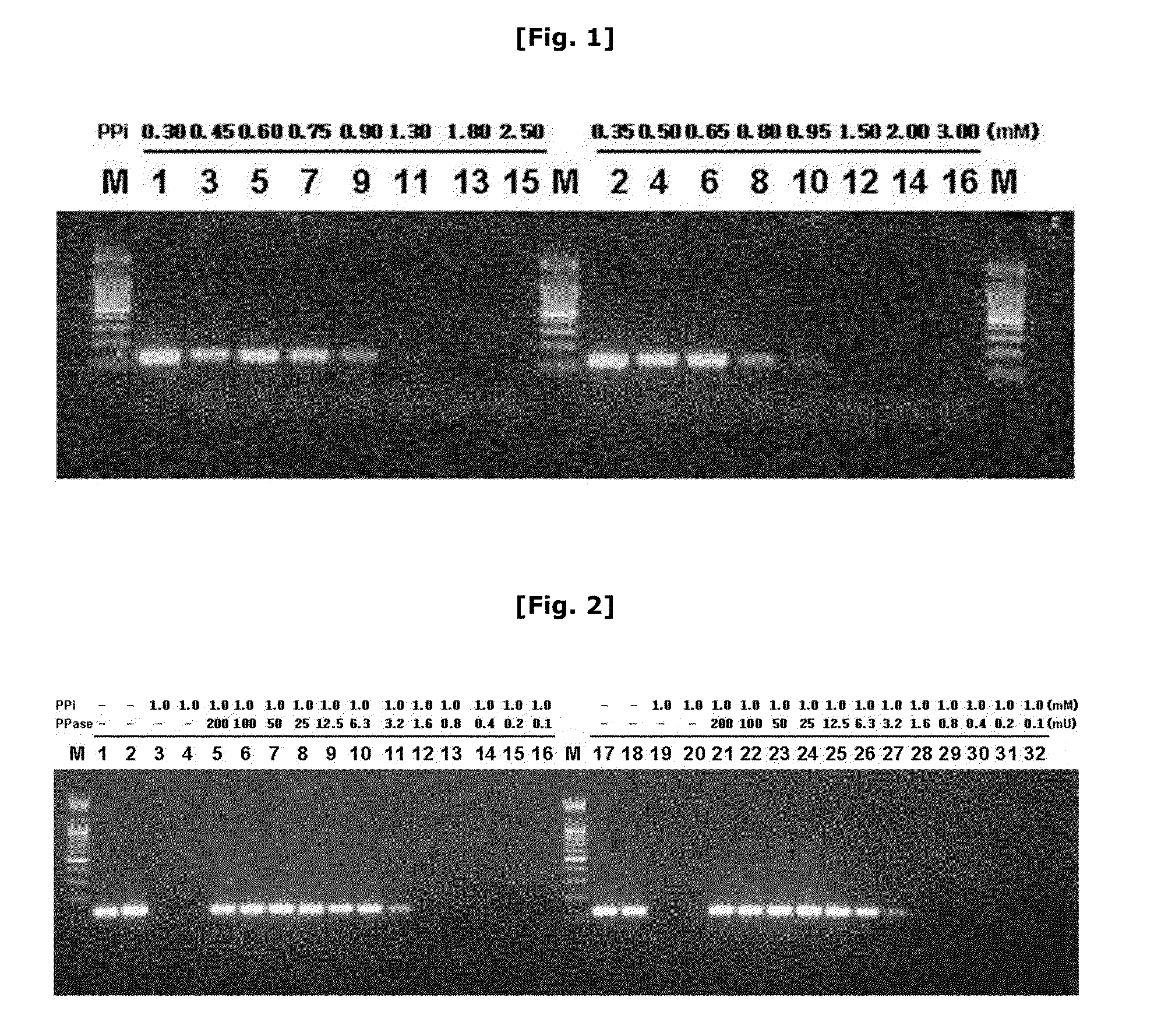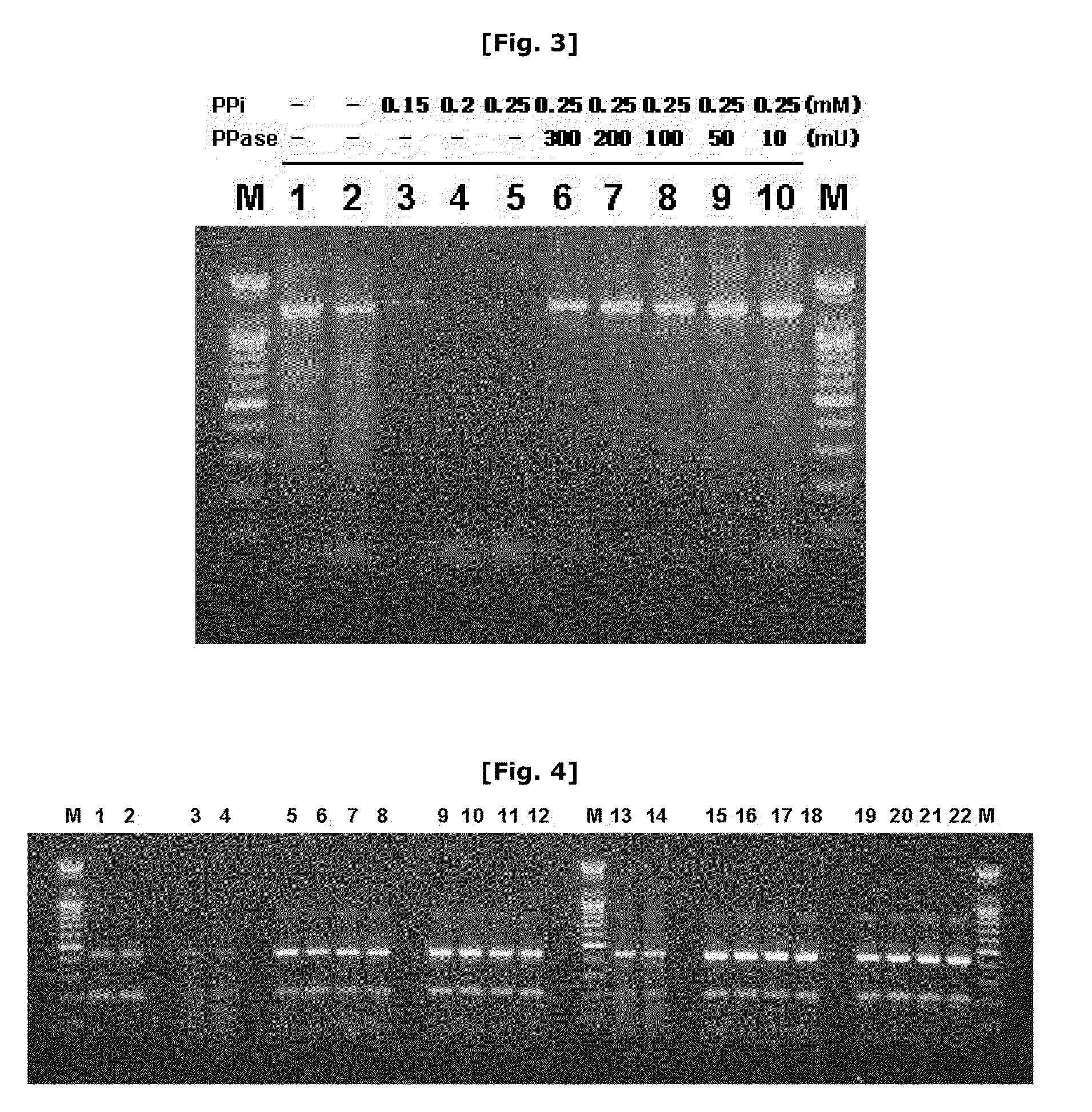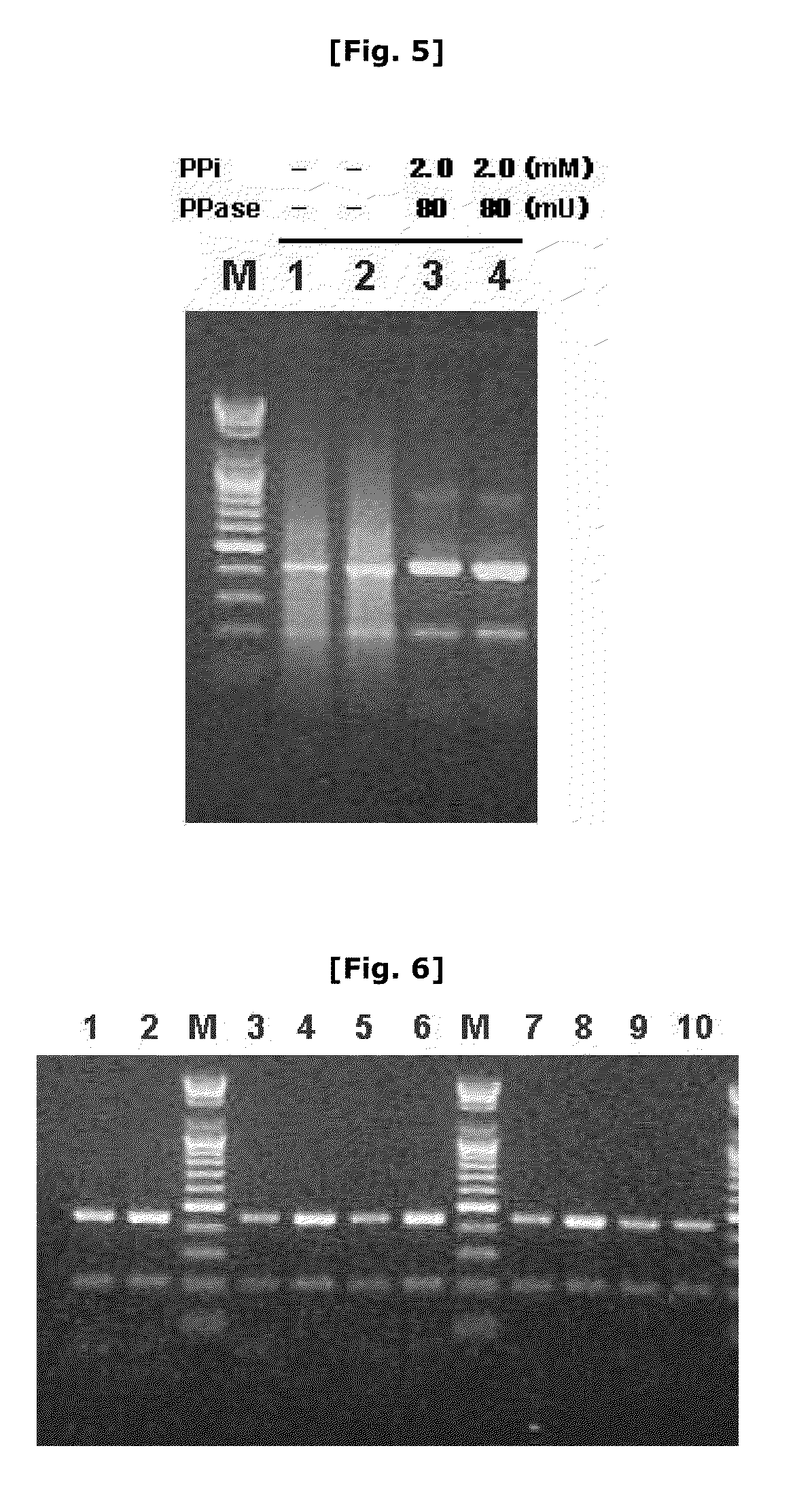Dried composition for hot-start PCR with long-term stability
a technology of long-term stability and composition, which is applied in the direction of hydrolases, biochemical apparatus and processes, enzymes, etc., can solve the problems of low stringency priming, low reaction temperature, complex target dna sequence, etc., and achieve the effect of improving stability at room temperature and long-term storag
- Summary
- Abstract
- Description
- Claims
- Application Information
AI Technical Summary
Benefits of technology
Problems solved by technology
Method used
Image
Examples
example 1
Concentration of PPi to Inhibit PCR
[0072]In the previous patent application (Korean Patent Application No: 10-1999-0004361), the present inventors investigated PPi concentration capable of inhibiting PCR reaction using Yersinia pestis genomic DNA having a low copy number as a template. And in this invention, the present inventors tried to determine PPi concentration capable of inhibiting low stringency priming not only with a target DNA having a low copy number but also with a target DNA having a high copy number.
[0073]First, the premix (10 mM Tris-HCl pH 9.0, 40 mM KCl, 1.5 mM MgCl2, each 250 μM of 4 types of dNTPs, 1 U Taq DNA polymerase and a stabilizer, Bioneer corporation, republic of Korea) containing Taq DNA polymerase was used. 5.0 ng of lambda DNA was used as a template DNA. L137_F primer represented by SEQ. ID. NO: 1 generating 137 by long PCR product and L137_R primer represented by SEQ. ID. NO: 2 were used respectively for PCR by 10 pmole per 20 μl reaction. PPi was adde...
example 2
PPase Activity Recovering PCR Reaction at High PPi Concentration
[0076]In the previous patent document (Korean Patent Application No: 10-1999-0004361), the present inventors investigated PPase activity to recover PCR reaction using Yersinia pestis genomic DNA having a low copy number as a template DNA.
[0077]And in this invention, the present inventors tried to determine PPase concentration capable of recovering PCR reaction inhibited by PPi not only with a target DNA having a low copy number but also with a target DNA having a high copy number.
[0078]First, the premix (10 mM Tris-HCl pH 9.0, 40 mM KCl, 1.5 mM MgCl2, each 250 μM of 4 types of dNTPs, 1 U Taq DNA polymerase and polyol, Bioneer corporation, republic of Korea) containing Taq DNA polymerase and the premix (10 mM Tris-HCl pH 9.0, 40 mM KCl, 1.5 mM MgCl2, each 250 μM of 4 types of dNTPs, 1 U Pfu DNA polymerase, 0.01% Tween 20 and polyol, Bioneer corporation, republic of Korea) containing Pfu DNA polymerase were prepared. 2.5 ...
example 3
Measurement of PPase Activity Recovering PCR Reaction at Low PPi Concentration
[0080]The premix (10 mM Tris-HCl pH 9.0, 40 mM KCl, 1.5 mM MgCl2, each 250 μM of 4 types of dNTPs, 1 U Taq DNA polymerase and polyol) containing Taq DNA polymerase was used. 2.0 ng of human genomic DNA was used as a template DNA. P65 primer represented by SEQ. ID. NO: 20 generating 1.5 kbp long PCR product and p83 primer represented by SEQ. ID. NO: 21 were used respectively for PCR by 10 pmole per 20 μl reaction. PPi was added to inhibit PCR reaction at the concentration of 0.15-0.25 mM. To recover PCR reaction inhibited by 0.25 mM of PPi, PPase (SibEnzyme Ltd.) was added at different concentrations of 300, 200, 100, 50 and 10 mU per 20 μl reaction respectively. PCR and electrophoresis were performed in the same manner as described in Example 1.
[0081]As a result, a non-specific reaction product was generated in the negative control (lanes 1 and 2, FIG. 3). When 0.15 mM of PPi was treated, Mg2+ was not comp...
PUM
| Property | Measurement | Unit |
|---|---|---|
| temperatures | aaaaa | aaaaa |
| temperature | aaaaa | aaaaa |
| melting point | aaaaa | aaaaa |
Abstract
Description
Claims
Application Information
 Login to View More
Login to View More - R&D
- Intellectual Property
- Life Sciences
- Materials
- Tech Scout
- Unparalleled Data Quality
- Higher Quality Content
- 60% Fewer Hallucinations
Browse by: Latest US Patents, China's latest patents, Technical Efficacy Thesaurus, Application Domain, Technology Topic, Popular Technical Reports.
© 2025 PatSnap. All rights reserved.Legal|Privacy policy|Modern Slavery Act Transparency Statement|Sitemap|About US| Contact US: help@patsnap.com



